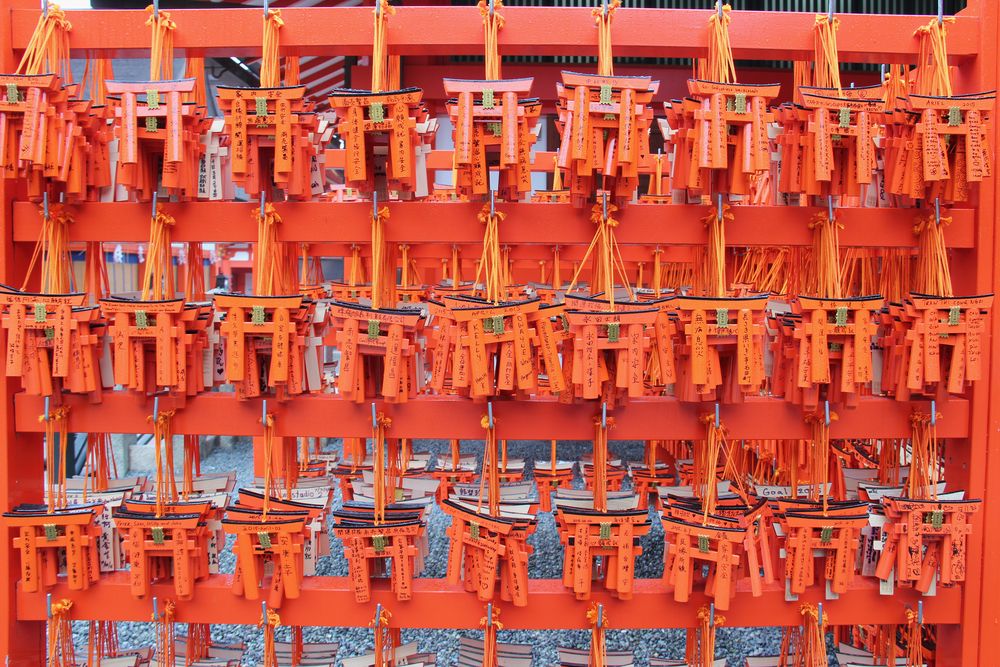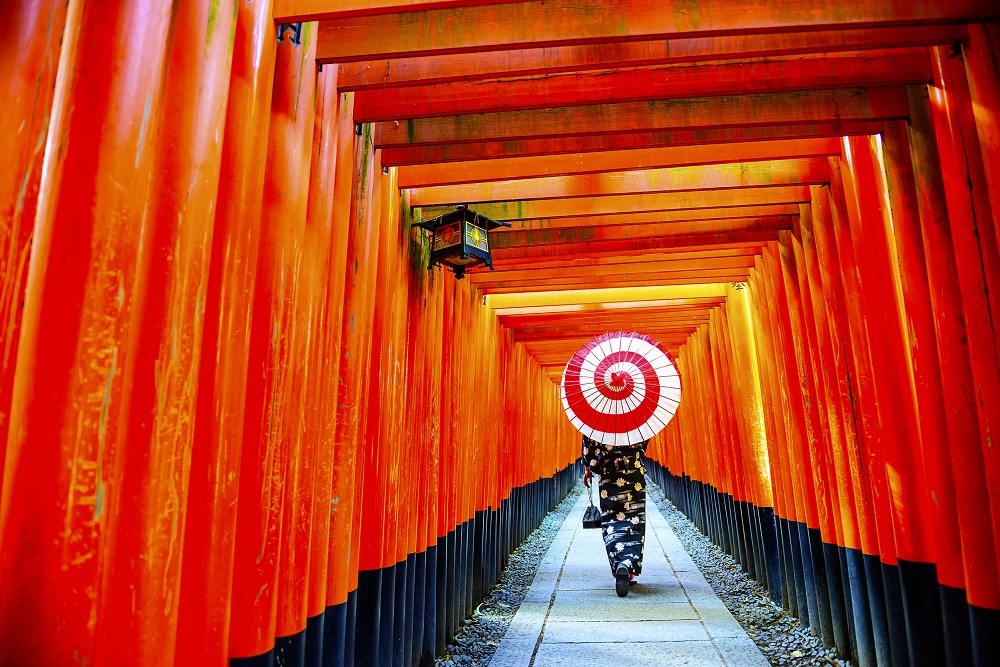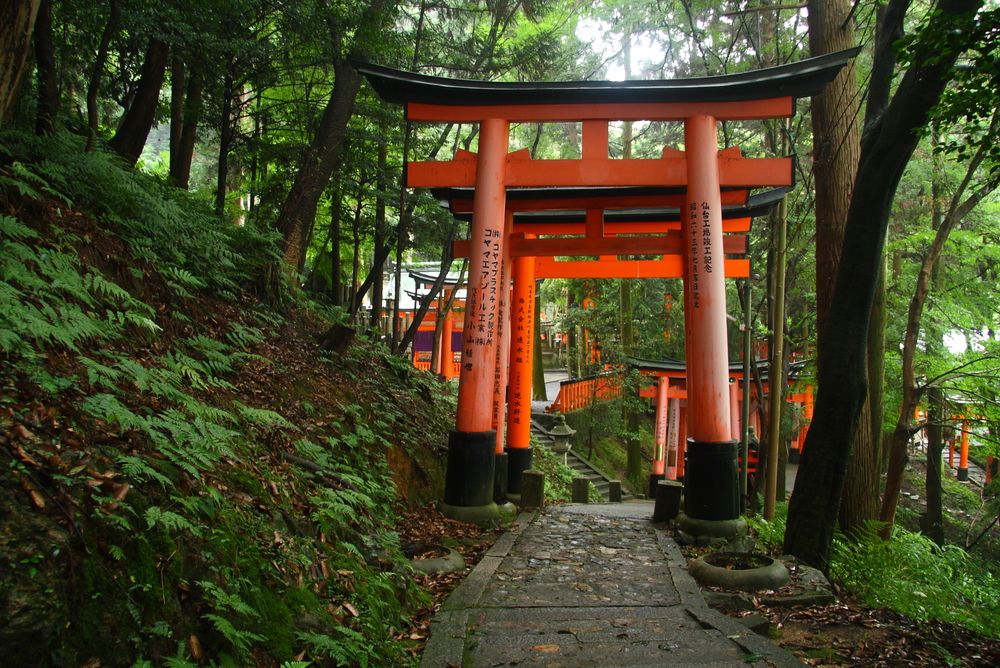| Updated 8/12 by Jennifer |
At the base of Kyoto’s Inari mountain lies one of the most famous of all shrines in Japan, Fushimi Inari-taisha (Fushimi Inari Shrine). Arguably one of the most well-known and most-visited shrines in Japan, Fushimi Inari Shrine is considered a World Heritage Site. While the red-orange torii gates are a staple of all holy Shinto sites, Fushimi Inari is home to thousands of them, about ten thousand to be more specific, and the torii gates of this shrine are one of best known and most photographed. However, Fushimi Inari Shrine is more than just a photogenic and beautiful place, but a deeply spiritual and historical land as well.

Fushimi Inari-taisha is one of several shrines dedicated to Inari, the Shinto god of rice and sake, though many people in more recent times have prayed more for general prosperity in as a whole. Foxes, more specifically white foxes, are a big part of the shrine, as foxes are considered to be messengers of the gods, and can be seen frequently in statues around the shrine grounds. Fushimi Inari Shrine isn't the only shrine that is an Inari Shrine, but Fushimi Inari Taisha is considered the head shrine of all Inari Shrines.

Originally built in 1499, Fushimi Inari-taisha is very old. While most visitors to the shrine come to see the torii gates, the buildings at the shrine’s entrance are also amazing. The giant gate at the entrance was donated by prominent historical figure, Toyotomi Hideyoshi in 1589 and behind it stands the shrine’s main building as well as several others.

Because Inari is viewed as responsible for businesses, merchants and manufacturers, each of the thousands of torii gates that make the shrine so famous have been donated by Japanese businesses whose names are inscribed on the back of the gates. The price of each gate begins at 400,000 JPY for the smallest size- that’s about 4,000 USD! The trail of gates spans well into the forest of Mount Inari, making for an unforgettable walk in the woods. The hike to the mountain’s summit can take about 2-3 hours, but visitors are able to turn around whenever is convenient for them.

The color of the shrine and torii gates are also significant as the red-orange color referred to as vermillion is thought to be a protective color against evil forces. This is true of many shrines throughout Japan, but at Fushimi Inari Shrine, it is also considered a color that represents the bounty that the deity Inari Okami provides. In addition, the pigment they use for the color had traditionally been made from a mixture that helps to preserve the wood.

If you're interested in visiting Fushimi Inari Shrine, the shrine is located close to the JR Nara line’s Inari Station. It’s also easy to walk to from the Keihan Electric Railway Main Line Fushimi-Inari station.


